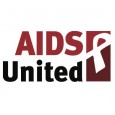House Speaker Paul Ryan came with promises of a return to regular order in the budget and appropriations process, just six months later conservatives in his party have quashed any hope of a streamlined process. Notwithstanding inaction on the part of the lower chamber, the Senate released its topline budget allocations for fiscal year (FY) 2017, in line with the $1.07 trillion total for discretionary spending agreed to in last year’s Bipartisan Budget Act. Better late than never considering April 15th is the statutory deadline for passage of a full budget resolution according to the Congressional Budget Act, at which point the appropriations process is supposed to begin.
The Senate topline allocations offer moderate increases in five areas under its purview, slight decreases in six areas that affect federal health care, the safety net among others and flat funds the remaining three funding areas.
In a year when up is down, appropriations move ahead of a budget, and the Senate is considering funding bills before the House, which is supposed to originate funding measures. When asked about the breakdown in process, Energy and Commerce Chair Fred Upton said, “That’s the way it is. C’est la vie.”
The House and Senate are likely to continue the push forward with the appropriations process absent a formalized budget and the implausibility of a vote to pass the legislation. Try as they may, it is highly unlikely that Congress will be able to pass controversial appropriations bills like the Labor Health and Human Services (LHHS) bill, which contain funding for health related programs including Ryan White, CDC prevention, NIH research and other HIV related areas.
Given the proposed program spending cuts we may see to LHHS given the Senate’s allocation proposal, the most likely funding scenario, a continuing resolution, is also the most appealing as we approach the October 1st beginning of a new fiscal year.
AIDS United will continue to meet with appropriators and rank and file members of Congress to ensure programs that affect people living with HIV are adequately funded. Our most vulnerable cannot be allowed to suffer amid the indecision in Congress. For questions, please reach out to Director of Government Affairs, Carl Baloney at cbaloney@aidsunited.org.
| Current Funding Level | Senate FY 17 | |
| Increases | ||
| Energy-Water Developement | $37.2 billion | $37.5 billion |
| MilCon-VA | $79.9 billion | $83 billion |
| Commerce-Justice-Science | $55.7 billion | $56.3 billion |
| Defense | $514.1 billion | $516 billion |
| Homeland Security | $41 billion | $41.2 billion |
| Decreases | ||
| Agriculture-FDA | $21.25 billion | $21.75 billion |
| Financial Services | $23.24 billion | $22.4 billion |
| Interior-EPA | $32.16 billion | $32 billion |
| Labor-HHS-Education | $162.1 billion | $161.9 billion *$270 million cut (-0.2%) |
| State-Foreign Ops | $38 billion | $37.2 billion |
| Transportation-HUD | $57.3 billion | $56.5 billion *$827 million cut (-$1.46%) |
| Flat Funded | ||
| Legislative Branch | $4.4 billion | $4.4 billion |
| Defense Overseas Contigency Operations | $58.6 billion | $58.6 billion |
| State-Foreign Ops OCO | $14.9 billion | $14.9 billion |








Comments
Comments